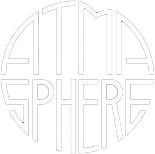Load Impedance
These days there are a lot of four ohm speakers available to high end audio. This is a trend that has been increasing since the late 1970s. Why have they become so common (and more importantly, is this helpful)? The answer has a bit to do with history.
In the old days, when tubes were the only game in town, many speakers were 16 ohms, and often were fairly high efficiency. This is because tube power has always been fairly expensive, so speakers were designed to make the most of it. As transistors began to appear, amplifier manufacturers recognized that increased profit was available- its a lot less expensive to build a solid state amplifier that has no output transformer or filament circuit. Yet for a given amount of power they could still charge 90% of what a tube amplifier cost, so profit margins were higher as were power levels.
Speaker manufacturers realized that they too had an opportunity for increased profit. High efficiency drivers are very expensive to build due to the very tight tolerances required to make an effcient motor to drive the speaker cone. By increasing the voice coil gap, it was possible to build a driver that cost as much as 1/10th the cost of before. Of course, they often had to handle more power and so the larger voice coil gaps allowed for heavier voice coils (which are relatively inexpensive compared to the cost of labor to make a close tolerance magnet assembly). Of course such drivers were often 10-12 db less efficient, and early on driver manufacturers recognized that if they had a four ohm voice coil, they could make the driver appear more efficient (by as much as 3db) by taking advantage of the fact that many solid state amps made more power into lower impedances.
But this comes at a price. If you look at the specifications of any amplifier, you will see that the distortion into 4 ohms is higher than it is into higher impedances. While this might work fine in what many call the 'mid fi' market characterized by box stores, in high end audio the idea is to get as close to the music as possible- which means keeping a lid on distortion. Many argue that the distortion increase is inaudible, but this is not the case.
General Electric showed in a study in the 1960s that the human ear used higher ordered (and in particular, odd ordered) harmonics in order to sense sound pressure. This is actually quite easy to demonstrate with what is today rather simple test equipment, and according to the Radiotron Designer's Handbook published by RCA, we have apparently known since the 1930s that we are more sensitive to higher ordered distortion products (this might be the 'Inconvenient Truth' of audio, as this particular fact is largely ignored by the majority of the audio industry). The point here is that the increased distortion seen in all amplifiers driving a lower impedance like 4 ohms is of the type to which our ears are keenly sensitive, because these harmonics are used the ear/brain system to sense sound pressure.
The implications are obvious. It does not matter the amplifier, all amplifiers sound smoother and more detailed driving a higher impedance. This is because the ear has a masking principle wherein louder sounds (distortion, in the case of a lower impedance speaker) mask the presence of quieter sounds (detail) and also because the ear/brain system converts all forms of distortion into tonality (in this case, brighter and/or harsher). The odd bit is that the ear/brain system also has a tipping point where tonality caused by distortion can be favored over actual frequency response errors. So you can turn down the treble in a bright system, but if the brightness is the result of distortion rather than frequency response, it will still sound bright!
If you are using a tube amplifier, the output transformers using the four ohm tap will not give nearly the performance that the same transformer will do on eight ohms let alone sixteen ohms. In addition, the speaker cable used driving a 4 ohm load becomes far more critical than it is a 8 ohms and 16 ohms. This is because the speaker cable is in series with the output impedance of the amplifier and so can have a much more noticable effect on damping when low impedance speakers are used. Fortunately, with all the Single-Ended triode amplifiers now available, the market for sixteen ohm speakers has improved quite a lot and they are once again (like they were in the fifties) available.
High-End audio is kind of like being at the carnival show. Have fun, but keep your wits about you.
